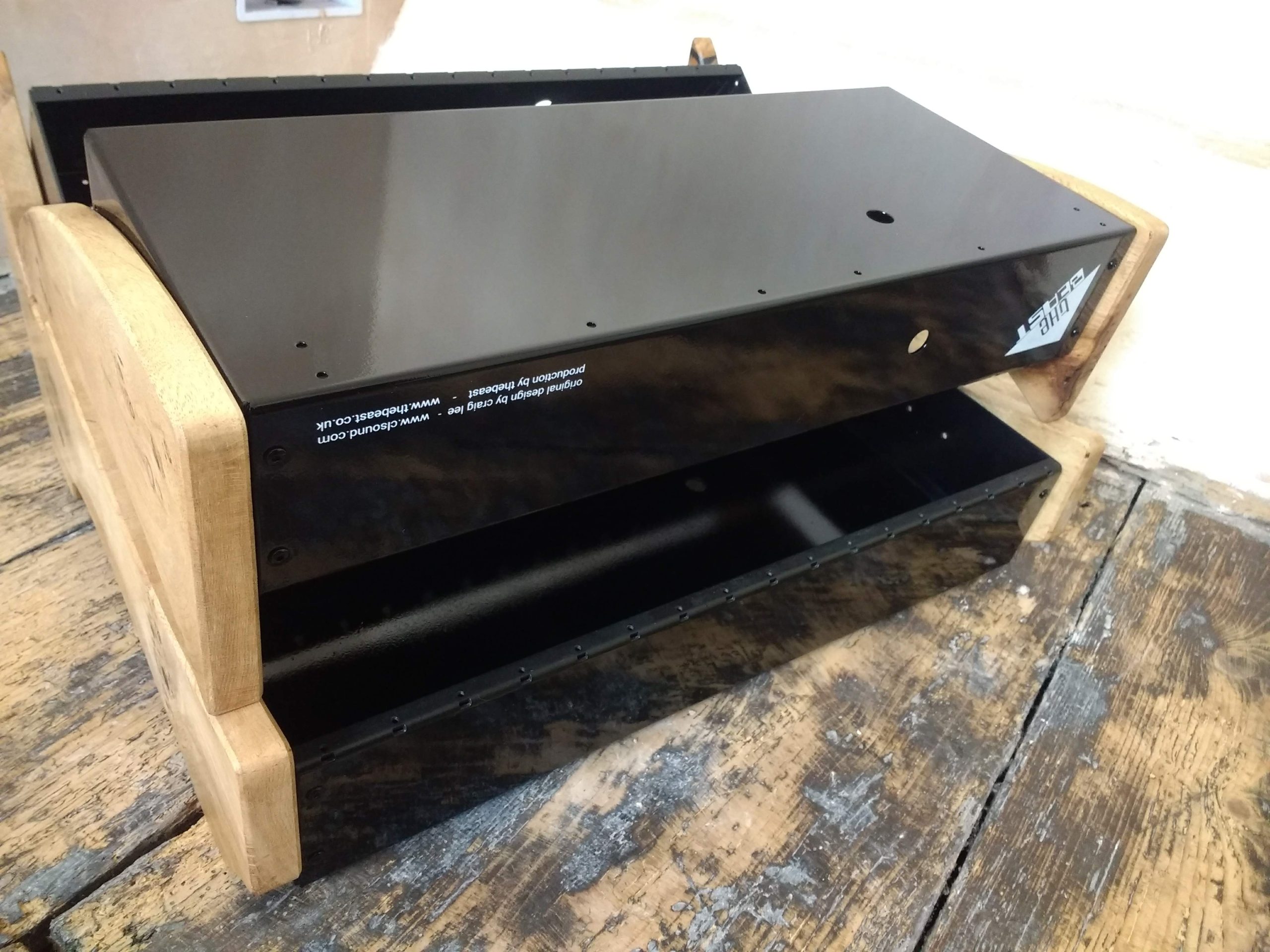3 Dimensional Works
All the timber that we ever use in our own products is locally sourced. Virtually all of it will have germinated, grown, and been felled within a 20 mile distance of the workshop.
In this, I prefer to use hardwoods that grow well in our local climate. The internet is awash with American youtubers cutting up American Black Walnut, but, whilst its entirely possible for me to source that if custom work requires it, i would always rather use timber with a lower transport impact.
One of the wood yards i frequent – true rural Devon!

I like figured wood, pippy oak etc, or with the shakes that other people reject. Resin work with oak, whilst time consuming, always looks good with natural splits and holes.

Sometimes i will choose spalted timbers. Beech is particularly impressive.
Its not always easy to find spalting that is just right, and so this is always less common for me than, for example, white english oak.
Some locally grown “rough sawn” spalted beech –
The variation in timbers, and methods used accounts for the variation in pricing in the stocked products in the shop.
Some brown oak, with subtle resin work –

And some pippy oak with more significant resin work on a “Loudest Warning” system –



Cutting generic parts from a plank is relatively easy, and sometimes a project requires just that, but other projects require different solutions.
Thicker timbers with subtle (or not so subtle!) resin work are generally more expensive to stock, and the resin work can take multiples of the production time of simple cutting, and it’s for this reason that the pricing seems to leap about!
Note, every item in the shop that is made of wood is the exact item for sale – so browse about and see what appeals to your own taste!
I also take on custom work also –
Custom work is never a budget option, simply because of the time and process involved, but if you want somthing special, then let me know what you have in mind!
Generally the job is designed in CAD, then sent to the CNC machine to cut templates in alloy.
Below shows the start of this process –
These templates are then replicated onto the wood itself using manually opperated machinery. This, somwhat convoluted approach, ends in a nicer final product, as template placement by eye, in order to take account of the grain or “figure” of the wood, tends to work better than just running a plank through a CNC router.
Placement below to maximise the effect of the grain and the “shakes” that will be filled with resin –

Now using the rough cut part to “find” its sister on a matching slab –

Depending on the stock, things like book matching may be possible (see the cherry ended console cases elsewhere on the site)
Wood ends can also be painted to give an entirely different style all together!
My paint experience is from the auto world. Give me a brush, and ill make a mess. Give me a spray gun and im at home!
With the right paint, even, otherwise dull materials, like MDF can come into their own. I only use 2k paints, partially as they’re what i have experience of, but, mostly, as they’re just worlds better, even on wood.
As a generalisation the method used would be identical to that of painting a car, with an epoxy primer, 2k base, and 2k clear coat for that glossy wet look.
Locally grown hardwoods –
English Oak
Pippy Oak
Beech (generally only if its spalted, as that makes it so much more interesting!)
Cherry
Sweet Chestnut
Elm (very occasionally)
I am reluctant to work with virgin imported timbers. I do not consider it necessary, given the wonderful and sustainable species that we have, quite literally, on our doorstep, here in Rural Devon, however, occasionally i find reclaimable timbers from overseas –
South American Mahogany –
I have access to a an amount of reclaimed genuine south American mahogany. Ethics, not to mention CITES, rightly prevents the use of most mahogany, however, reclaimed timer work whilst hugely time consuming, still gives access to this timber.
The starting material, old reclaimed south American hardwood, covered in bitumen and grit –

After cleaning and thicknessing, a custom jig is welded up to give compression in both dimensions for glue up –

All that, just to get a board (but a board that is otherwise unobtainable!) –

Sapele –





